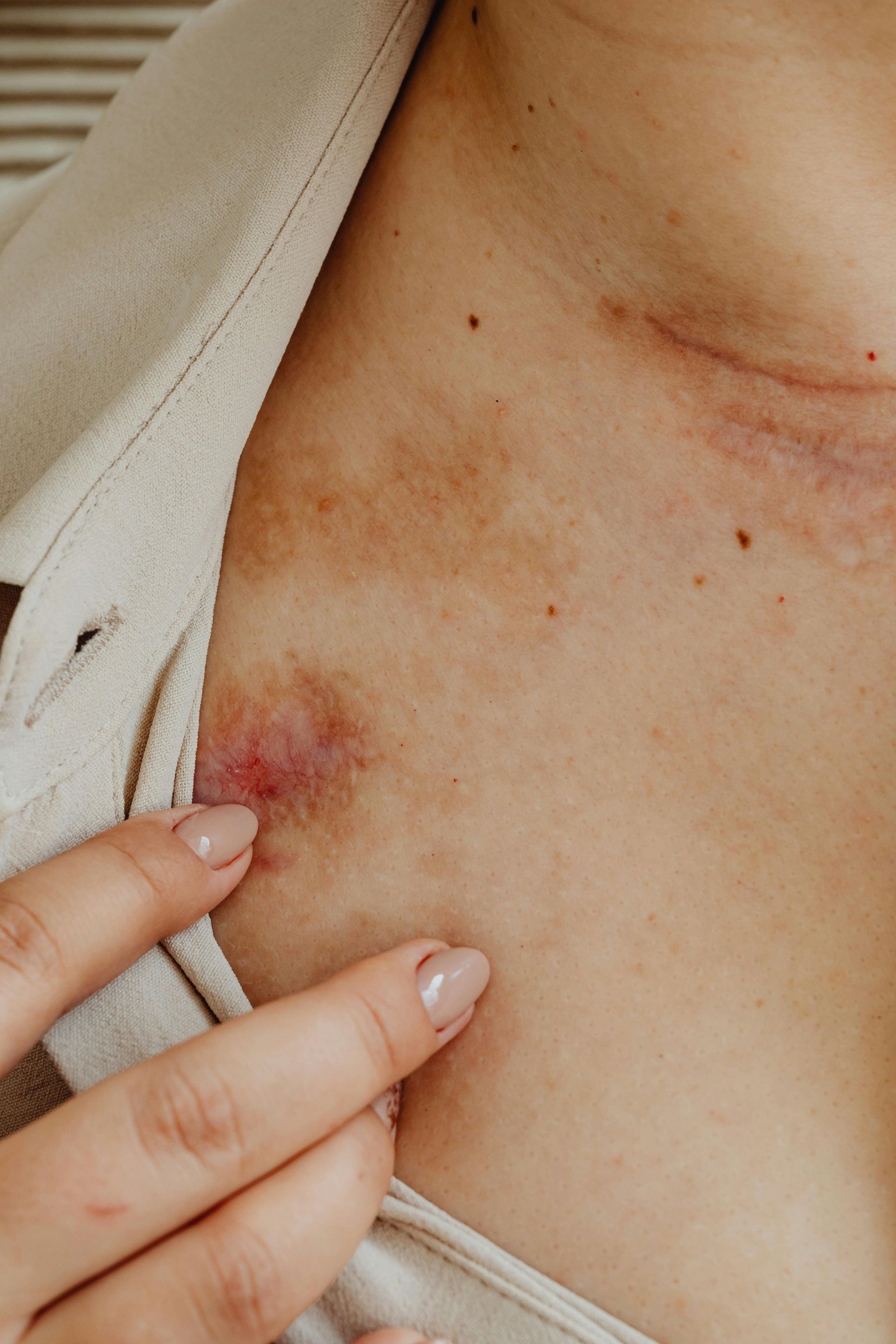Human Trafficking Red Flags: Key Indicators You Can Watch For🦋
Human trafficking is a global issue that most people don't realize is happening in their own backyard...and Michigan is no exception. Unfortunately, the exploitation of individuals through force and fraud for labor or sex work is happening all around us.
Vulnerable people who face unstable living conditions or have experienced past violence are usually
victims of trafficking. Red flags to watch out for are physical injuries like burns or scars, malnutrition, and avoiding eye contact.
Labor trafficking victims are often subjected to
unsafe workplace conditions and injuries, while in cases of sex trafficking, victims are controlled or even branded with tattoos.
By better understanding the red flags and signs of human trafficking, you can help learn how to report them. Keep reading to find out what to watch for signs of possible trafficking.
Key Takeaways
- Human trafficking is defined as the use of force, fraud, or coercion to exploit victims for labor or sex. Traffickers use control tactics like retaining identity documents and income while their victims face abuse and neglect.
- Signs to watch for are physical injuries, malnutrition, untreated illnesses, lack of identification access, fear of authority figures, and confusion about time or location. Tattoos are also meaningful in sex trafficking cases.
- Victims may be fooled by social media scams promoting false job offers or relationships. Youth in foster care, immigrants with unstable status, or those facing financial hardships are at higher risk.
- Other red flags include long working hours without breaks, unsafe conditions, and restricted living environments. Victims may appear tired or unaware of their surroundings due to isolation tactics.
- To report a suspected case, call 1-888-373-7888 (National Human Trafficking Hotline) for confidential help 24/7 or text "BeFree" (233733).
What is Human Trafficking?
Although there are
different types of human trafficking, most traffickers use force or fraud to take advantage of vulnerable victims. They may be pushed into risky labor contracts, or even commercial sex acts. Trafficking impacts millions of people worldwide, including many in the United States.
Victims of trafficking may face physical abuse, sexual abuse, or emotional manipulation. They may become
trapped in a dangerous situation after falling for false promises of a job, or an online relationship.
It's not uncommon that trafficked individuals
live in unsafe conditions and have no access to important documents like their passport, or even their bank account. Signs like malnutrition, untreated injuries, or avoidance of social interaction can indicate someone is a victim of human trafficking.
The National Human Trafficking Hotline can help to identify a case if you suspect a possible trafficking situation.
Trafficking thrives on vulnerability—your awareness could save lives.
Next, let's talk about who traffickers target, and how you can recognize the early warning signs.
Who Do Traffickers Target?
Individuals with unstable living situations or a history of violence, and young people in the child welfare or juvenile justice systems tend to be more at risk of trafficking.
Trafficking victims may also include those experiencing
substance abuse, financial issues, or with a vulnerable immigration status.
Traffickers often abuse tools like social media to lure potential victims through false promises of work or romantic relationships. They then
trap their victims by taking away their personal possessions and controlling sensitive information.
Victims of domestic violence specifically are at significant risk due to their emotional and physical vulnerability.
Key Red Flags of Human Trafficking
The signs of human trafficking are not often hard to spot, if you know what to look for. Below you'll learn how to identify red flags and help protect potential victims.
Physical injuries such as bruises, burns, or scars
Bruises, burns, or scars can be signs of a potential trafficking situation. Traffickers often leave
visible marks of abuse since usually they are using force to control their victims. Injuries tend to be left untreated since seeking medical care could risk them getting caught.
In sex trafficking cases,
burns or tattoos might serve as branding or marks of ownership.
In labor trafficking situations, workers may be subjected to workplace injuries like exposure to toxic chemicals or struggle with respiratory issues. They work long hours in dangerous conditions and have no access to medical care if needed.
Avoidance of eye contact and authority figures
Trafficked victims commonly
avoid making eye contact
and keep their distance from authority figures. They may refuse to look at law enforcement, medical professionals, or service providers due to scare tactics from traffickers.
These behaviors are not unusual for victims of trafficking who have dealt with past
violence or threats.
Since traffickers use power to instill fear, a victim might be uncomfortable around security cameras or seem anxious around authority figures. This behavior may also extend to social interactions with strangers or family members.
Lack of control over personal identification or finances
Traffickers often trap their victims by
confiscating their personal identification like their passport or driver’s license. This prevents them from escaping, while also increases their dependence on them. Victims may not have control of their own money, including their paychecks or credit cards, which traffickers use as a key method of control.
Large debt is another tactic criminals use in human trafficking situations. They may falsely claim that the victim owes them money for travel, rent, or made up fines. These lies make it difficult for individuals to escape and get help.
Signs of malnutrition or neglect
Physical signs like
extreme thinness, dry skin, or brittle hair
can be red flags for human trafficking. Victims may be sick often, display visible injuries, or be constantly tired.
Signs of
malnutrition include sunken cheeks or a frail appearance. This is because traffickers’ use of control prevents victims from easy access to food or medical care.
Other red flags include dirty clothing and poor hygiene in combination with avoidance of eye contact in social settings.
Loss of sense of time or place
Since traffickers isolate their victims by moving them frequently, and controlling their environment, victims of trafficking often
lose track of time or location. For example, a victim may not even know what city they are in because their abusers are intentionally keep them in the dark.
This disorientation is common among victims in the commercial sex industry or in labor trafficking situations like an illicit massage business. If an individual appears to be confused about simple details like what day it is or addresses, it could mean they are in immediate danger and need your help to intervene.
Common Red Flags in Labor Trafficking
Labor trafficking can lead to dangerous exploitation and extreme work conditions. Here are a few ways to identify the warning signs.
Working excessively long hours without breaks
Within industries like agriculture, construction, or even in illicit cantinas, you'll find that victims are working extremely long hours without scheduled breaks. Workers appearing fatigued or falling asleep on the job are red flags to watch out for.
Victims might also display
untreated workplace injuries like
burns or bruises from dangerous working equipment, or respiratory issues from exposure to toxic chemicals.
Victims of trafficking will not control their own schedule. Employers make them work unusual hours and
deny them basic rights like food and sleep. These inhumane conditions are clear signs of labor trafficking.
If you see someone working in these conditions, it’s important to report it immediately to an official government organization such as the National Human Trafficking Resource Center (NHTRC).
Inhumane living conditions or restricted freedom
Victims of trafficking often spend their time living in
inhumane conditions. High security measures like locked doors or constant surveillance with cameras are just a few of the ways that traffickers trap and hide victims. They may be forced to live in tiny spaces or in a room with only opaque windows.
Because they have
little access to food and clean water, these type of environments can quickly lead to malnutrition and severe health issues.
It's easy to
identify signs of neglect by observing a victim's living space. You'll often notice
overcrowding or very little personal space.
These horrific conditions make it crucial to recognize labor trafficking, especially if someone is being forced into working long hours without proper nutrition or rest.
Recognizing Red Flags in Sex Trafficking
Do you know the signs for controlling behaviors or signs of manipulation in relationships? Keep reading to grow your knowledge so you can help future victims.
Tattoos or branding as a form of control
Branding victims with tattoos is one method that sex traffickers use to identify an individual as their property. These marks may be names, symbols, barcodes, or phrases like "Owned By" to display ownership and make it harder for victims to escape or hide.
The neck, wrists, or chest are common areas you may see these tattoos since they are highly visible. These branding marks are meant to deter others from interfering with the victim's exploitation, especially in places like strip clubs or go-go bars.
Presence of a controlling person or “manager”
Human trafficking victims are usually controlled by one individual who is often referred to as their "manager". This individual may appear to be a
romantic partner or employer as a front, but behind the scenes they are using threats or force to maintain control. Their victims are constantly monitored and the "manager" is in charge of dictating their every movement, their communication, and any personal decisions.
You'll find that victims will not speak independently or may entirely
avoid answering questions directly. Identification documents like passports or driver’s licenses will be confiscated by a victim's manager to prevent them from escaping.
Next, let’s talk about what you can do if you see a red flag and need to report a suspected case of trafficking.
How to Report Suspected Human Trafficking
If you have seen signs of trafficking or suspect someone is a victim of trafficking, you must act quickly. Quick action can save lives.
- Call the National Human Trafficking Hotline at 1-888-373-7888 to report your concerns confidentially. This hotline operates 24/7 and offers support in over 200 languages.
- Text "BeFree" (233733) for immediate support. You will communicate through text without exposing your identity.
- If the situation is urgent, contact local law enforcement or public safety officials. Let them know what you observed, including the locations and people involved.
- Review the official website of Polaris Project to understand more reporting methods and to access fact sheets with important information about indicators of human trafficking such as commercial sexual exploitation or forced labor.
- Become aware of the warning signs of human trafficking through trusted organizations in Michigan. Many groups are already working to combat trafficking, such as the Michigan Human Trafficking Task Force, which coordinates statewide efforts focused on raising awareness and rescuing victims.
- Inform healthcare providers about common red flags like untreated burns, malnutrition, other physical injuries, or any mental health issues of suspected victims while visiting clinics.
- Report child trafficking incidents directly to Child Protective Services (CPS). Pay close attention to minors with unexplained branding marks like tattoos.
Following these steps while also learning what red flags to watch out for can help save victims life and provide them a safer future.
Conclusion
Human trafficking is a serious crime that is often happening right before our eyes. You can
help victims by understanding common red flags and staying alert. Look for signs of control, injuries, or isolation in people around you.
Acting on your instincts could help save a life in Oakland County. Be part of the solution today by reporting suspected cases and sharing the many warning signs.
FAQs
1. What are common red flags that may indicate a victim of trafficking?
Common red flags include black eyes, identity theft issues, lack of knowledge of whereabouts, as well as the use of force or threats to control a victim.
2. How can I learn more about human trafficking awareness?
You can learn more from resources like Human Trafficking Fact Sheets or enroll in a free introductory course offered during Human Trafficking Awareness Month.
3. What role does the United States Government play in addressing human trafficking?
The United States Government works to combat trafficking through various laws, public education campaigns, and support for victims.
4. How can I be part of the solution to stop human trafficking?
Educate yourself on the list of signs, share information widely, and report any suspicious activity to the police immediately.







